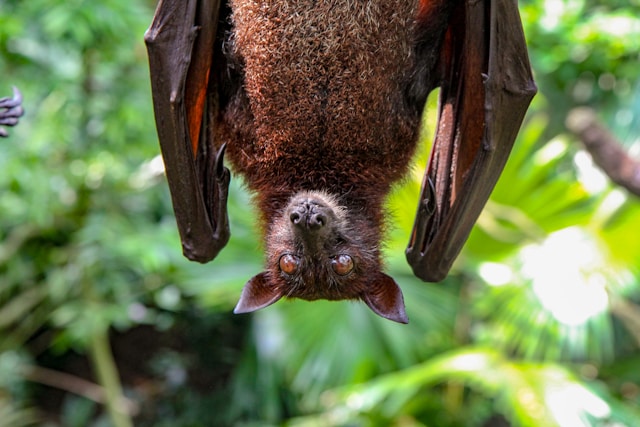Conservation success is due to the fact that endangered and rare bats, including the elusive Bechstein’s bat, are spotted in a unique UK habitat.
Longleat Estate, home to one of the UK’s most iconic safari parks, has become an unexpected sanctuary for some of Britain’s rarest bats, according to a recently concluded two-year survey. Researchers found 14 distinct bat species thriving within the estate’s grounds, including the endangered Bechstein’s bat, signalling an impressive win for conservation efforts and native biodiversity in Wiltshire.
The project, overseen by Longleat’s conservation and research manager Dr Tom Lewis, revealed a remarkable concentration of bat species on the estate. “The fact that so many native bat species are living and, more importantly, breeding at Longleat demonstrates just how suitable the habitat is for these creatures,” Dr Lewis noted enthusiastically. For him and his team, the study’s results have highlighted Longleat as an ecological gem, offering these protected bats a rare space to flourish away from the pressures of modern encroachment.
Embed from Getty ImagesThe presence of the endangered Bechstein’s bat is especially encouraging, as it relies on “well-connected wooded landscapes” — a type of habitat that has dwindled across much of the UK. Longleat’s diverse forests and well-preserved natural areas have offered the ideal refuge, which has even led experts to believe the bats are breeding within the estate. Dr Lewis explained, “This habitat provides what the Bechstein’s bat needs in terms of shelter and foraging space, which is increasingly hard to find elsewhere in Britain.”
Among the 14 bat species found, researchers were delighted to identify other notable and rare sightings, such as the Barbastelle bat, Greater and Lesser horseshoe bats, the Serotine, Leisler’s bat, and the Nathusius’ pipistrelle. Several of these, including the Barbastelle and the Greater horseshoe, are listed on conservation red lists due to their vulnerability. These bats have seen their natural habitats reduced dramatically over the years, with many previously thought to be at significant risk of extinction in the UK. For them, Longleat’s unique combination of well-managed forested areas and minimal light pollution has been instrumental in supporting their resurgence.
Longleat’s conservation programme has played a vital role in safeguarding these populations. By focusing on maintaining a healthy and diverse environment, the estate has effectively created a safe haven not only for bats but for a range of species reliant on similar habitats. “Bats are incredibly valuable for the ecosystem,” Dr Lewis said, highlighting their role as natural pollinators and seed dispersers. “They contribute significantly to biodiversity, which in turn helps other wildlife thrive. Longleat’s approach to conservation underscores the importance of keeping these ecosystems intact for everyone’s benefit.”
One of the reasons why Longleat’s conservation team is thrilled with the findings is that several of the bat species identified have only small populations remaining in the UK. Even more encouraging is that the data suggests these bats are reproducing. Breeding populations indicate that these species are not only surviving in this environment but actually thriving — a hopeful sign for bat conservation overall.
For Longleat visitors, these bats remain elusive. Most species are nocturnal, emerging at dusk to feed, while the estate’s resident animals are most active during daylight hours. However, the research underscores Longleat’s role in contributing to British wildlife protection on a broader scale. Through thoughtful landscape management and conservation-friendly policies, Longleat is quietly nurturing some of the UK’s most at-risk mammals, who are invisible to most but essential to the health of the ecosystem.
Longleat’s bat-friendly environment also stands in contrast to the increasing urbanisation surrounding it. While natural bat habitats are being encroached upon by housing developments, road networks, and farmland expansion, Longleat’s carefully managed forests remain a place where these creatures can thrive without disruption. In a climate where woodland corridors and undisturbed natural spaces are disappearing at an alarming rate, Longleat’s work is an inspiring example of how habitat conservation can support even the most fragile species.
The study’s findings extend beyond Longleat itself, contributing valuable information to the national conservation database for bats. Data on the distribution and health of species like the Bechstein’s bat, Barbastelle, and the Lesser horseshoe is critical for researchers and conservationists who are building strategies to protect these bats across the country. As Dr Lewis pointed out, Longleat’s work could serve as a blueprint for other estates and organisations wishing to implement successful conservation programmes in other regions.
Looking forward, Longleat plans to continue its conservation efforts, potentially expanding its studies to see how other wildlife on the estate benefits from the carefully maintained environment. For now, however, the focus remains on these resilient bats and the woodland spaces that allow them to survive in an increasingly challenging world.
As the Longleat team reflects on their success, Dr Lewis added a hopeful note, “To have an estate where bats — some of the UK’s rarest — not only live but thrive, is testament to the importance of dedicated conservation work. It’s a privilege to see them here, and we hope it encourages others to support efforts for their protection
